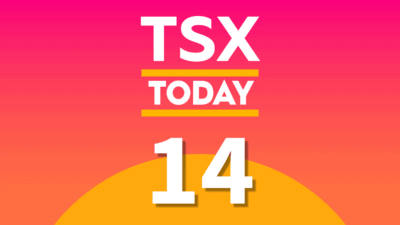The ratings agency Moody’s recently downgraded its outlook for the senior debt and uninsured deposits of Canada’s seven largest banks from stable to negative. This resulted from Ottawa’s decision to implement a “bail in regime” for systemically important domestic banks.
The new regime sees senior debt holders and uninsured depositors placed in line before Canadian taxpayers if a Canadian bank requires a bailout. According to Moody’s, this has caused the balance of risk for senior debt holders and uninsured depositors for these banks to shift to the downside.
The key questions for investors are how will this impact them, and whether Canadian banks, or at least the top five, are now more risky since this change in government policy.
What does this downgrade mean for investors?
I have already taken a closer look at the Bank of Nova Scotia (TSX: BNS)(NYSE: BNS), which received a double whammy with Moody’s also downgrading its financial strength to negative. This was on the back of the view that it has increased its risk appetite, creating further additional investment risk for investors. However, this increased appetite for risk is part of the bank’s overall strategy aimed at driving growth in an oversaturated domestic financial services market.
As we will see, both it and the other major banks have relatively low-risk operations, with many of their key risk indicators well within acceptable standards. This is because each bank has a relatively conservative risk appetite and strong risk-management framework focused on maximizing the risk/reward ratio from their operations.
These are the key reasons why Canadian banks, like their Australian counterparts, weathered the global financial crisis so well, especially when compared to U.S. and UK banks, which were overleveraged and had high-risk credit portfolios.
Key risk indicators remain well within acceptable parameters
All of Canada’s banks have solid Tier 1 capital ratios, which is a key measure of financial strength. It is the Canadian Imperial Bank of Commerce (TSX: CM)(NYSE: CM) and Bank of Nova Scotia that have the highest Tier 1 capital ratios among the top five, at 10% and 9.8% respectively. However, all of the top five banks have ratios of over 9.5%, which is well above the regulatory minimum of 5.5%.
Each of the banks also continues to manage a strong credit risk framework. As a result, they have very low impaired loan ratios, a key measure of credit risk. This reflects the high quality of their loan portfolios and ultimately the strength of their balance sheets, with loans under management being key assets. These ratios are far lower than the banking industry average south of the border, where the industry-wide average non-performing loan ratio of 1.68% is well in excess of those reported by Canadian banks.
It is the Royal Bank of Canada (TX: RY)(NYSE: RY) that has the lowest ratio of 0.23%, reflecting the high quality of its loan portfolio, while CIBC has the highest at 0.51%, indicating that it has the lowest-quality credit portfolio among its peers. Much of this can be attributed to its ailing Caribbean operations, which have already cost the bank dearly, forcing it to make a $543 million impairment charge against its Caribbean business for the last quarter due to a large volume of non-performing loans.
While I believe that CIBC is the riskiest of the top five, predominantly because of its focus on the domestic market and issues within its Caribbean operations, it is Toronto Dominion Bank (TSX: TD)(NYSE: TD) that has embarked on the riskiest growth strategy. I have taken this view despite Moody’s views on Bank of Nova Scotia’s growth strategy, because Toronto Dominion has invested heavily in expanding its commercial banking operations in the highly competitive and fickle U.S. market.
A number of non-U.S. banks, including CIBC, have already made costly errors and crashed and burned when attempting to enter this market in the past. However, despite these risks the bank has made solid progress so far, with its U.S. retail banking business contributing 25% of the bank’s total net income.
More impressively, for the fiscal second quarter 2014, equivalent to the calendar’s first quarter, the bank’s net income grew 15% compared to the equivalent quarter in the previous year. When this solid bottom-line growth is considered in conjunction with the expectation that the U.S. economy will grow faster than expected with a GDP growth rate of 3% for the second half of 2014, the substantial growth potential of this business becomes apparent.
Like its peers, Toronto Dominion continues to maintain a strong risk-management framework, with all of its key risk indicators, including the all-important non-performing loan-loss ratio of a mere 0.48%, well within acceptable parameters.
Despite the downgraded outlook by Moody’s, Canada’s top five banks remain well-positioned to weather any storms that may impact Canada’s economy. They certainly have not become more risky overnight solely because of Ottawa’s decision to implement a bailout policy that places the onus on individual systemically critical banks rather than taxpayers.
If anything, they are among some of the most conservatively managed banks globally, and even where they have embarked on risky growth strategies, they have done so in a conservative manner with an eye firmly on the risk/reward trade-off. This makes Canada’s top five banks, and in particular Bank of Nova Scotia, Royal Bank of Canada, and Toronto Dominion, core holdings in any share portfolio.
 Stock Up Sale
Stock Up Sale







